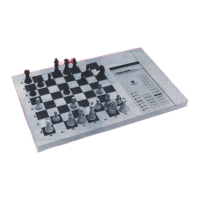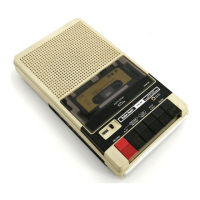The
rate at which
asynchronous data is transmitted
is defined
as
the
baud
rate. Baud
rate is the inverse
of the time
duration
of the
shortest
signal
element. Normally,
this
is one
data bit interval.
The
baud rate
is equal
to the bit rate if one
stop bit is used; but for
systems
which
use more
than one
stop bit, the
baud rate does not
equal
the bit
rate.
Asynchronous
transmission over
a simple twisted
wire
pair can
be
accomplished
at moderately
high baud rates (10K
baud
or higher,
depending
on the
length
of wire, type of drivers,
etc.).
Transmission
over
the
telephone network
is generally limited
to approximately
2K
baud
and a modem
is required to convert the
data pulses
to
tones that
can be
transmitted
through the telephone
network.
Radio
Shack's
Telephone
Interface is the ideal
modem
for this
RS-232-C
Interface.
Signal Conventions
The E.I. A. RS-232-C electrical
specification defines
voltage levels
and corresponding logic
conventions
associated with data and control
information
transmitted
between equipment. For
data
interchange,
the signal is considered in the marking condition when the
voltage
measured at the interface point is more
negative
than
—3
Volts(with
respect to signal ground). The signal is considered in the
spacing
condition when the
voltage is
more positive than
+3
Volts(with
respect
to
signal ground).
The marking condition corresponds
to a logic one
(
1
)
and the space
condition corresponds
to a
logic
zero
(0).
For
timing and control
interchange circuits,
the function
is
considered
to
be"on"when the voltage on the
interchange
circuit
is more positive than
+3 Volts(with respect
to signal
ground);
and is considered to
be"off"when the voltage is more negative than
—3
Volts(with respect to signal
ground). The "on"condition
corresponds to
a logic
zero
(0)
and the"off"condition corresponds
to a logic one
(1).
Table 1
summarizes this information.
NOTATION
INTERCHANGE VOLTAGE
Negative Positive
Binary State
Signal Condition
Function
1
Marking
OFF
Spacing
ON
TABLE
1.
ON/OFF CONDITION

